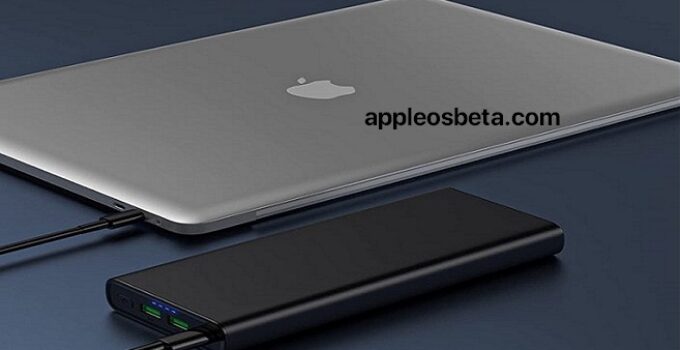The best powerbanks for MacBook and MacBook Pro. If you are preparing for a camping holiday, “adventure” or if you simply think you risk finding yourself in a situation where you will not have an outlet to power your Mac at hand, then you have certainly also thought about getting a external battery to overcome the problem of autonomy.
How to Fix Bluetooth Issues on M1 Mac Mini
Although the Powerbanks were initially born as batteries to support smartphones and tablets in everyday life, to allow users to always have energy available to use the devices on the move without risking running out of water right at the best (here you will find a list of the best with USB-C for iPhone and iPad), today thanks to the adoption of USB-C ports on portable Macs and also on iPad Pro, these accessories have become very useful even for those who have a computer.
The problem is that if low-powered batteries are sufficient to fully recharge an iPhone, with an output of 1-2 A and around 2,500-3,000 mAh capacity, when it comes to MacBooks, everything changes.
To be able to adequately recharge a computer, the energy supply power must be much higher than that of traditional portable batteries as well as support Power Delivery technology and contain a good number of mAh to ensure at least a complete recharge of the PC.
USB-C socket or power socket?
Thanks to the adoption of USB-C in the latest MacBooks, the available batteries have now increased in number. In the past, for a battery to be useful it had to have a socket compatible with the MacBook plug, therefore a real wall socket. Now this need is no longer there because it is enough for the battery to have a USB-C output (possibly 30W and up if you have a MacBook Air or at least 45W if you have a MacBook Pro) to be sufficient to recharge a Mac.
However, there are still several batteries with power outlet on the market. This type of accessories are now geared more towards the camping device market than the computer world. In fact, they have the defect of being larger than models without a socket and also more awkward to handle because they require that the computer power supply be carried around with the battery.
We omit in this article to list high capacity battery packs, real small portable generators like those of Jackery which produces some of the best accessories in this area, with 230V and 200W power sockets or the Anker PowerHouse. But if weight and size weren’t a problem these cases could be very interesting.
How many mAh?
Another aspect to consider is the battery capacity. To understand how useful a battery can be, do not use the mAh (milliampere) data provided by the manufacturers: it is not particularly significant indeed it is practically useless. The calculation must be done on Wh (Watt hours) in relation to those of the Mac’s internal battery. Here’s how to proceed.
- Then look for the Wh of the battery. If you can’t find them on the seller’s website, go to the manufacturer’s website. If you still can’t find them you should be wary; in line (very) general however battery of about 28000 mAh with 3.5V output provides about 100 Wh.
- Compare the Wh data of the battery with those of your Mac. When you do not find the Wh of the Mac, you can get them by going to “About this Mac” in the Energy section, looking for the battery specifications and its voltage. This search is especially useful when the Mac is not new and the battery is therefore deteriorated.
- At that point you can compare the Wh of the PowerBank and those of the Mac. Knowing how many hours ticked from the internal battery, you will have an approximate idea of how much the PowerBank can add in hours of work. If your internal battery lasts around 5 hours, if you want to have 10 hours of additional autonomy, you have to buy a battery that is twice the Wh of the internal one.
Let’s take a few examples using as references a MacBook Pro 16 M1 (11.45 V, 8,693 mAh, 99.6 Wh) and MacBook Air M2 (11.4 V 4.379 mAh 52.6 Wh).
This 26800 mAh battery provides 99.16 Wh, the same Wh of a MacBook Pro 16 ″ M1 battery that has an 8693 mAh battery and about six times that of a MacBook Air. But despite this, you will get only one charge of the internal battery of the 16 ″ Mac and twice that of the MacBook Air.
Another example: this 64,000 mAh battery provides 236.8 Wh and will recharge the internal battery of our 16 ″ Mac for about 2.3 times and that of a MacBook Air for almost 5 times.
However, also take into account two other important aspects
- Each battery has a different energy efficiency determined by the quality of the components and subsequently also by its wear. In practical terms we can expect that the real Wh figure of a new PowerBank is about 20% lower than the nominal one.
- The estimate, net of efficiency, will only approach the real result if we are talking about the Mac off. If the Mac is running we should expect a lower charging capacity.
Charging speed
- Another fundamental aspect is the charging speed. Charging with battery at the speed you would have by plugging the Mac into the socket is valid only if the battery supplies the same Watts. For example, for a 16 ″ MacBook Pro you will need a 100W charger. If you supply less Watts, charging will be slower. If you are using the Mac it is possible to “keep it alive” even with a battery with far fewer Watts than you will supply with its charger, but the internal battery will not recharge.
- Again in general it can be said that if you use a MacBook Pro or a MacBook Air to navigate and perform light tasks, a battery that provides half the wattage absorbed by the Mac is able to keep it alive.



